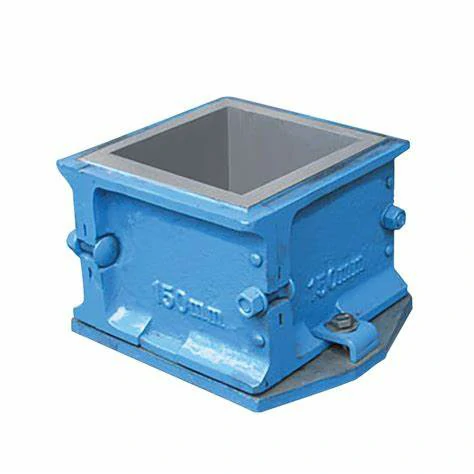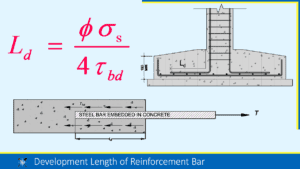For hardened concrete, compressive strength is an important parameter to determine material performance in service conditions. The concrete mix can be designed by the design engineer to achieve the required durability and engineering properties. The strength of the concrete is known by its characteristics of compressive strength. This article is about the characteristics of the compressive strength of concrete.
What is Compressive Strength?
The compressive strength of hardened concrete is treated as the most important property. It can be easily found by crushing a standard 150 mm cubic or cylindrical specimen. In general, many desirable properties of concrete (eg. shear and tensile strength, modulus of elasticity, bond, impact resistance, wear resistance, durability, etc.) can be related to compressive strength. Thus, compressive strength is often used as an indicator of the overall quality of concrete. It is also known as the crushing strength of concrete.
The crushing strength of hardened concrete is usually determined from standard specimens (cubes or cylinders) after they have been moist-cured for 28 days. Standard procedures for sampling, making, curing and testing the test specimens are prescribed in ASTM C 39 for cylinders so that the failure stress can be determined with better repeatability and reproducibility. Standard cylinders have a length/diameter ratio of 2 but cubes have an aspect ratio of unity.
Cubes are loaded against a pair of their moulded sides to achieve the same requirements. Although the applied load is uniaxial compression, the friction between the test specimen and the metal bearing plates of the test machine introduces a set of biaxial states of stress at both ends of the specimen.
The compressive strength of concrete is traditionally determined after 28 days of curing. This is also the concrete strength used in structural design codes. However, quality control in concrete production is no longer satisfactory for the current rate of construction.

Definition
- The compressive strength of concrete is defined as the ability of the concrete spacemen to withstand the load before its failure. Or
- It is defined as the ability of a material or structure to carry the loads on its surface without any crack or deflection.
Formula
Compressive Strength = Applied force / Cross Section Area
Determining the Compressive Strength of Concrete
It is determined by the mixing coefficient of each batch in order to maintain the required quality of concrete during pouring. The strength is required to calculate the strength of the members. Concrete samples are cast in a mould and tested under the influence of compressive loads to determine the strength of the concrete.
In very simple words, the crushing strength is calculated by dividing the failure load by the area of application of the load, usually 28 days after curing. Concrete strength is controlled by proportions of cement, coarse and fine aggregate, water and various additives. The ratio of water to cement is the main factor in determining the strength of concrete. The lower the water-cement ratio, the higher the crushing strength.
Also, read: What Is Concrete Mix Design?
Compressive Strength of Different Grades of Concrete at 7 and 28 Days
| Grade designation | Compressive strength (fck) at 7 days (N/mm2) | Compressive strength (fck) at 28 days (N/mm2) |
|---|---|---|
| M15 | 10 | 15 |
| M20 | 13.5 | 20 |
| M25 | 17 | 25 |
| M30 | 20 | 30 |
| M35 | 23.5 | 35 |
| M40 | 27 | 40 |
Strength of Concrete at Various Ages
The strength of concrete increases with age and the table shows the strength of concrete at different ages in comparison with the strength at 28 days after casting.
| Age | Strength on Percentage |
|---|---|
| day 1 | 16% |
| day 3 | 40% |
| day 7 | 65% |
| day 14 | 90% |
| day 28 | 99% |
| SI.N0 | Types of Construction | Minimum Grade |
|---|---|---|
| 1. | Lean Concrete | M5 and M7.5 |
| 2. | Plain Cement Concrete | M10 |
| 3. | RCC general construction | M15 |
| 4. | Water tank, domes, folded tanks | M20 |
| 5. | RCC in seawater | M30 |
| 6. | Post Tension Concrete | M30 |
| 7 | Pre Tension Concrete | M40 |
Also, read: What Is Water-Cement Ratio? | Calculation Of W/C | Value Of W/C
Factor Affecting Compressive Strength
- Size Factor
- Shape Factor
- Slenderness Ratio
Size Factor:
As the size of the cube decreases, the strength of the concrete increases because of better homogeneity. For example, a 100mm cube size will have 5% more strength than a 150mm cube size.
Shape Factor:
A standard cylinder of 150mm diameter and 300mm height has more strength of 80% than that of a 150mm cube.
Slenderness Ratio
The slenderness of the concrete is indirectly proportional to the ceushing strength of the concrete. Slenderness increases and the strength of the concrete decreases.
Also, read: Poisson’s Ratio Of Concrete: Understanding Its Significance In Structural Behavior
Procedure for Concrete Cube Test
- Specimens stored in water shall be tested immediately upon removal from the water and while they are still in wet condition.
- Surface water and grit shall be wiped off the specimens and any projecting fins removed.
- Specimens when received dry shall be kept in water for 24 hours before they are taken for testing.
- The dimensions of the specimens to the nearest 0-2 mm and their weight shall be noted before testing.
Calculation
The measured compressive strength of the specimen shall be calculated by dividing the maximum load applied to the specimen during the test by the cross-sectional area.
Report
The following information shall be Included In the report on each test specimen:
- identification mark.
- date of the test,
- age of the specimen,
- curing conditions, including the date of manufacture of the specimen in the field,
- weight of the specimen,
- dimensions of specimen,
- maximum load,
- compressive strength, and
- the appearance of fractured faces of concrete dud type of fracture, these are unusual
Result of The Cube Test
Average compressive strength of the concrete cube = ………….N/ mm2 (at 7 days)
Average compressive strength of the concrete cube =………. N/mm2 (at 28 days)
Also, read: Factor Affecting Workability Of Concrete
FAQs:
Q: What is the compressive strength of M20-grade concrete?
Ans: The compressive strength of the M20 grade concrete is 20N/mm2 at 28 days.
Q: Why the test is conducted on the spacemen after 28 days?
Ans: The concrete after 28 days achieves 99% strength and conducting the test on spacemen after 28 days gives the best result.
Q: Difference between Compressive strength and characteristic compressive strength?
Ans: Compressive strength is the applied pressure at which a given concrete sample fails. Whereas, Characteristic compressive strength would be that compressive strength below which not more than 5% of the samples are expected to fail. Thus atlas 95% of the samples have higher compressive strength than the characteristic strength.
Q: What should be the dimension of the spacemen?
Ans: The dimension for the specimen is as follows:
1. For cubical specimens it is recommended to have 150 X 150 X 150 mm (LXBXH)
2. For cylindrical specimen should have a 150 mm diameter and 300 mm height
The above dimension is in accordance to conforming to IS 10086: 1982.
![]()







